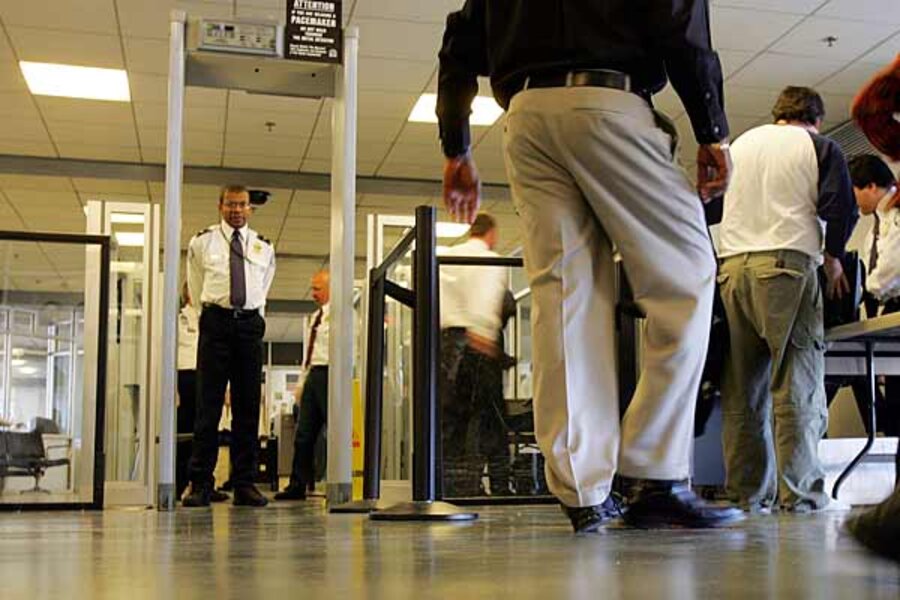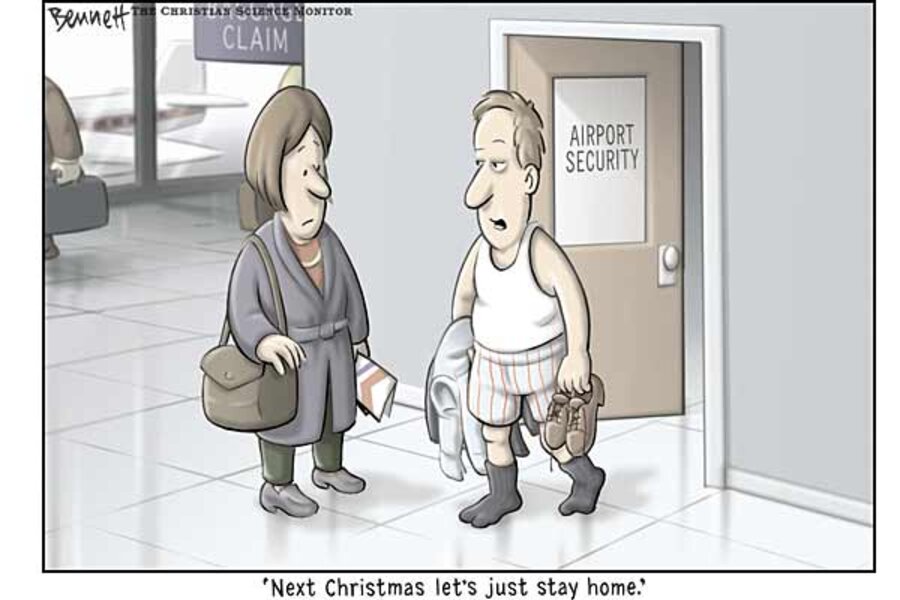The TSA began testing the use of backscatter and millimeter wave technology full-body scans in 2007, but the technology did not become the primary form of passenger screening at many US airports until late this year.
Those who refuse a full-body advanced imaging technology (AIT) scan – either for health or privacy reasons – are now subject to an "enhanced" pat-down that includes checking travelers' groin areas. The TSA accelerated the use of both AIT and enhanced pat-downs after Nigerian Umar Farouk Abdulmutallab tried to ignite explosives sewn into his underwear on Christmas Day 2009.
Resistance to the body scans and pat-downs came to a head two weeks ago when John Tyner, a flyer at San Diego International Airport, recorded himself telling a TSA screener that he'd have him arrested if he touched his crotch. Mr. Tyner likened the TSA pat-down to sexual assault. Loosely organized "opt out day" protests have been planned for Wednesday, the day before Thanksgiving, which is traditionally one of the busiest travel days of the year.
TSA chief John Pistole has said the agency tries to make security screening as "minimally invasive as possible."






